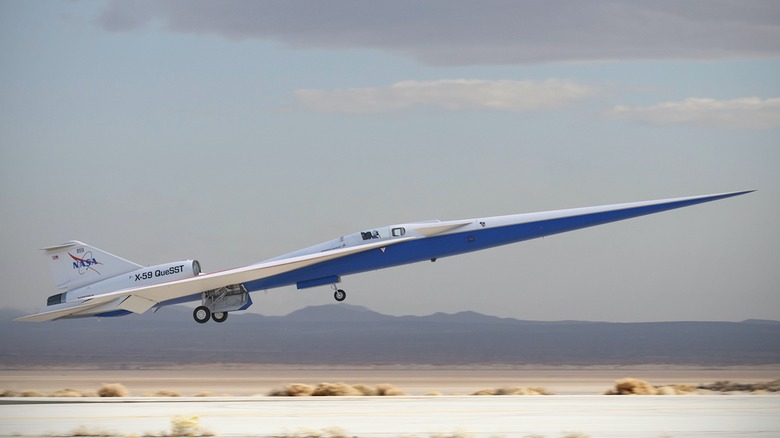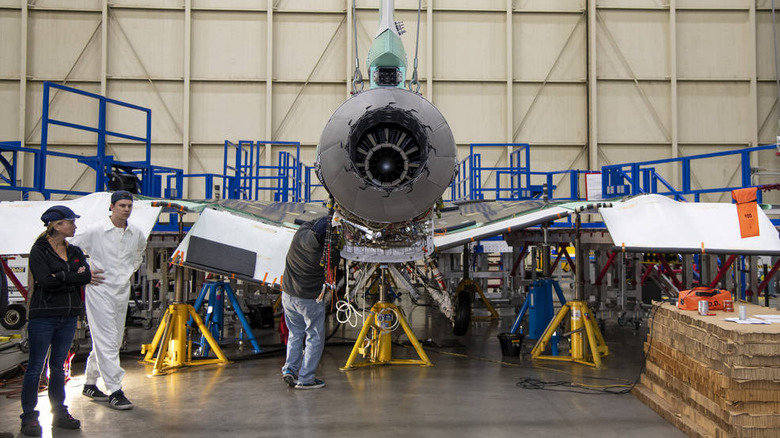NASA's X-59 Supersonic Plane Gets Powerful Engine For Quieter Flight
Planes that can travel faster than the speed of sound — supersonic aircraft — have been around for a long time. Today, however, most supersonic planes are military planes that are designed for highly specific use cases like stealth and reconnaissance missions. The era of supersonic passenger flight ended in 2003 following the retirement of the only commercial supersonic passenger aircraft type in the world — the Concorde. While there were several reasons for the demise of the Concorde, one of the major problems associated with supersonic planes continues to trouble aerospace engineers worldwide even today.
These planes are infamous for an effect called the Sonic Boom — a loud blast-like noise created by shockwaves created when an object breaches the sound barrier. At the height of the supersonic flight era in the 1950s and 60s, the FAA received several complaints from American citizens about excessive noise. This resulted in the FAA banning overland supersonic flights across the country — a ban that remains in effect as of 2022.
While aeronautical engineers have been trying to fix the sonic boom problem for ages now, the project received a fillip in 2018 after NASA started designing a supersonic aircraft that will reduce the loudness associated with sonic booms. NASA calls this under-development aircraft the NASA X-59. Earlier in 2022, NASA announced a change in the mission's name and decided to call the project the NASA Quesst. While NASA engineers continue to work on developing the X-59, they reached a significant milestone a month ago when the first of the X-59 prototypes received a brand-new engine.
Everything to know about the NASA X-59's new engines
In a blog post, NASA shared details about the new engine that will power the X-59 aircraft. The new engine is supplied by General Electric Aviation and bears the model number F414-GE-100. Measuring more than 13 feet in length, the new engine is capable of generating 22,000 pounds of thrust and will be able to propel the X-59 to speeds of up to Mach 1.4. In addition, the X-59 and its engine can cruise at a max altitude of 55,000 feet.
NASA also revealed that the development of the engine required close collaboration among teams from NASA, Lockheed Martin, and General Electric Aviation. The engine used on the X-59 is also expected to play a major role in reducing the loudness of the sonic boom emanating from the aircraft when it breaches the sound barrier. With the X-59's engine installed on the aircraft, NASA is inching closer to conducting the first test flight of the X-59, scheduled sometime in 2023.
The first few test flights will be followed by test flights over communities and populated places in the U.S. in 2025. While the X-59 will never make it to commercial production, the lessons learned from its development are likely to usher in a new era of supersonic flight and could also possibly result in the revival of commercial supersonic flight in the future.

